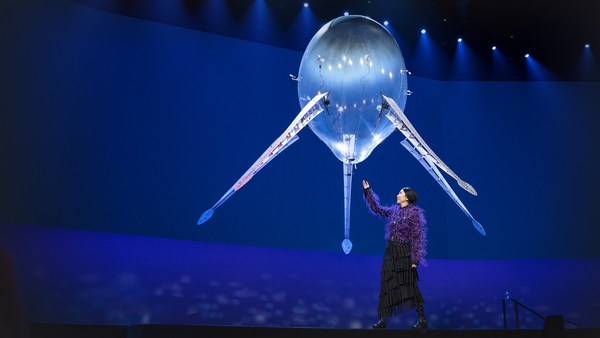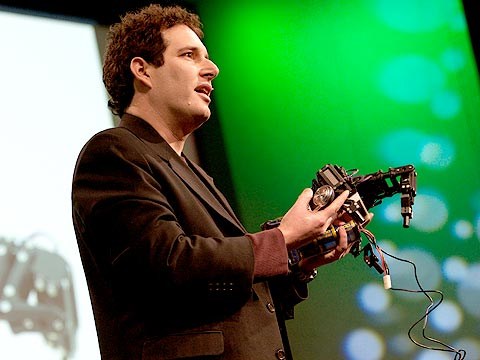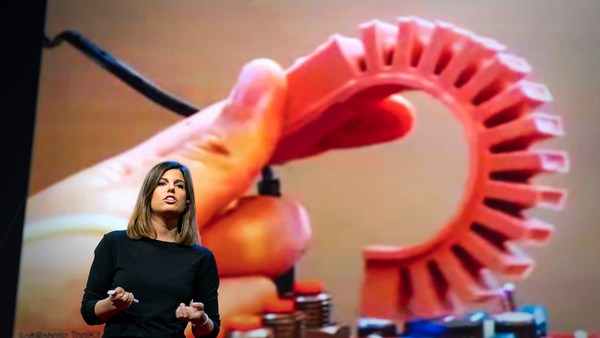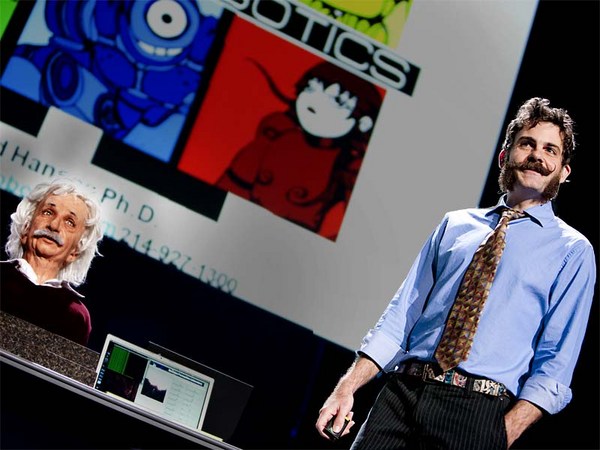Modern engineering focuses on rotating motors to power almost any machine. It has taken about 200 years for motors to become what they are today. And they're still loud and unnatural in their ways.
The constant noise of machines causes problems for living beings everywhere, both in the ocean and also on land. Humans who are constantly exposed to noise can become stressed, depressed and even develop tinnitus. In contrast, there are no rotating motors in nature. Nature often smoothly, glides, swims or wiggles, without the rattling of rigid parts or the loud rubbing of surfaces.
I believe we can and should rehaul our approach to how we make machines. Instead of using rigid or unnatural materials, what if we made biomimetic machines? Machines made of soft or living materials that are adaptive and safe to use in a variety of everyday tasks?
Can you imagine boats or submarines that propel themselves by moving their tails from side to side, just like fish do? So to imitate these natural movements, we have to replace rotating motors and fast, spinning propellers with artificial muscles. And I can tell you this, this can be done.
Our team of researchers at MIT and ETH Zurich has started to develop less disruptive robots by introducing a new, biomimetic way of moving through water. We created a biomimetic robotic fish. Her name is Sophie. She's the first demonstration of a fully untethered, soft robot that can explore the ocean without the need for propellers. Sophie pumps water back and forth within a highly deformable tail. Her tail movement imitates the natural swimming motion of real fish. Sophie's natural design allows her to closely monitor aquatic life.
Now, there's a catch. Sophie is energy-hungry and loud. Yes, we successfully managed to build a robot that swims like a fish, but... Sophie requires a motor and a pump to properly work.
Now we are replacing that motor and pump, which is noisy and not desired in such a way, we're replacing it with silent, artificial muscles. These muscles are called HASELs. They directly and efficiently convert electrical energy into muscle contractions. Take a look at this large muscle we made to lift and lower a leg. A stack of flexible sheets contracts and relaxes just like a thigh muscle does.
Let me tell you how this works. So we take laminated sheets to create pouches. We have several of these pouches within a single muscle. We now take a conductive ink and spray-coat that ink onto these pouches, and then we inject them with oil. After having done this, we have a conductive ink that acts like a flexible electrode that squeezes these liquid-filled pouches when a voltage is applied. Now, just like muscles with real fish, we take this kind of filmed muscles and pair them up as antagonistic pairs and put them into our soft robotic fish design. We 3D-print the hull and the spine of this fish, using soft and rigid materials. The fish now swims silently by electrically charging the muscles inside of the fish in an alternating fashion from one side to the other.
To improve our designs, we do not rely on tedious trial and error fabrication. Instead, our software rapidly simulates and optimizes a design for performance before we have to build it. Our approach creates a continuous design space that interpolates between existing fish designs to create new designs. Our optimization then explores this continuous design space to come up with new and faster creatures we have not seen before.
Robots one day might even be made of living muscle cells. Wouldn't it be great if such a living robot would then heal itself, just like human muscles do? I can tell you this. Starting from muscle cells, we can already print, grow and stimulate muscles. We are now beginning to make these muscles larger, longer-lasting and controllable. It’s a fascinating challenge to engineer a standalone muscle without a supporting organism that provides this muscle with an immune system. These living muscles efficiently convert chemical energy that comes from nutrients into muscle contractions. Living muscles can eventually become sustainable and biodegradable machines that decrease emissions and pollution all while actually truly mimicking nature.
So all of this, what I've told you, is possible with the knowledge that researchers and engineers have today. I believe we have to rethink every machine ever invented from a holistic perspective. We have to rethink what the machine should do and what it should not do. I think we want machines that safely integrate with us, improve our quality of life. All the while, we respect nature, and don't pollute our world with loud noises.
So let's reimagine machines to take on forms we have never thought of before and discover places we have never been to before.
Thank you.
(Applause)





